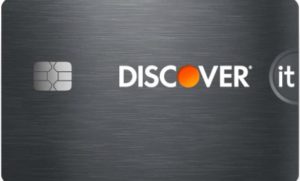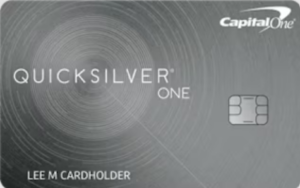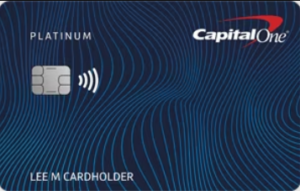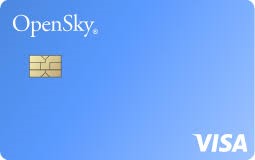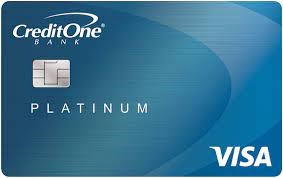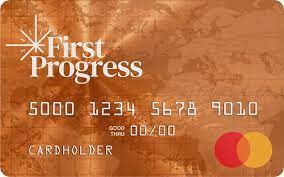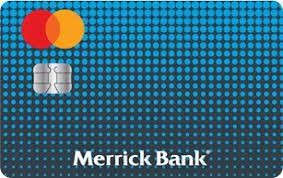Best Credit Cards After Bankruptcy Discharge
About Caitlyn
Caitlyn is a freelance writer from the Cincinnati area with clients ranging from digital marketing agencies, insurance/finance companies, and healthcare organizations to travel and technology blogs. She loves reading, traveling, and camping—and hanging with her dogs Coco and Hamilton.
Read full bio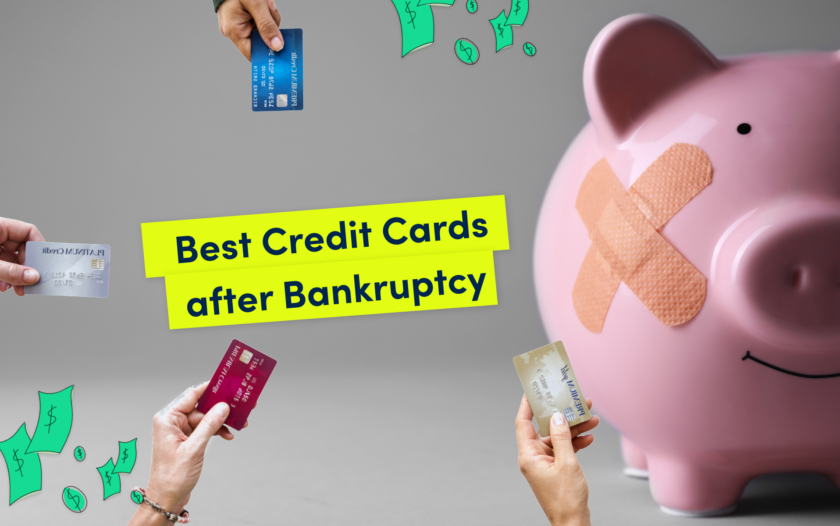
At a Glance
Filing for bankruptcy can have a significant negative impact on your credit score, sometimes bringing it down hundreds of points, which can make it difficult to get approved for credit (like a credit card) in the future. However, using a credit card strategically and responsibly after bankruptcy can help you improve your score.
The right card for you depends on your situation and needs, but there are options out there once your bankruptcy has been discharged. Read on to learn more.
Comparing the top credit cards for after-bankruptcy
| Credit Card | Minimum Security Deposit | Rewards Rate | Credit Score Required |
|---|---|---|---|
| Discover it Secured Credit Card Apply now |
$200 | 2% cash back at gas stations and restaurants; unlimited 1% back on other purchases | No credit check required |
| Capital One Quicksilver Secured Cash Rewards Credit Card Apply now |
$200 | 1.5% on every purchase | None |
| Capital One Platinum Secured Credit Card Apply now |
$49 | None | No credit check required |
| OpenSky Secured Credit Visa Card Apply now |
$200 | None | No credit check required |
| Credit One Bank Platinum Visa for Rebuilding Credit Apply now |
N/A | Up to 10% cash back on eligible purchases | 500 |
| First Progress Platinum Select Mastercard Secured Credit Card Apply now |
$200 | 1% cash back on payments | None |
| Merrick Bank Double Your Line Secured Credit Card Apply now |
$200 | None | None |
A closer look at the best credit cards after bankruptcy
Discover it Secured Credit Card
Rewards Rate:
- 2% cash back at gas stations and restaurants (on up to $1,000 in combined purchases each quarter).
- 1% cash back (unlimited) on all other purchases.
- Unlimited dollar-for-dollar match on cash back you’ve earned at the end of your first year.
Annual fee: $0
Intro APR: N/A
Regular APR: 28.24% variable
Security deposit: $200 to $2,500
Our verdict: If you want a combination of a secured credit card designed to help you build credit combined with flexible cash back rewards, the Discover it card is for you. There’s no annual fee, no credit score required to apply, and no harm to your credit for applying. Your credit line equals your deposit amount, starting at $200, and after seven months you qualify for automatic upgrade opportunities. Plus, you can earn 1-2% cash back on eligible purchases and an unlimited dollar-for-dollar cash back match of everything you earned at the end of your first year. The card also has a 99% acceptance rate and information is reported to the credit bureaus.
Pros:
- No credit score is required and no harm to your credit for applying.
- 1-2% back on eligible purchases, plus cash back match after your first year.
- Can qualify for automatic upgrade opportunities.
- Review your FICO credit score for free.
- Reports to all three credit bureaus.
- Other benefits include a $0 fraud liability guarantee, free Social Security number alerts, and more.
- Get preapproved without impacting your credit score.
Cons:
- High variable purchase APR.
Apply now: Discover it Secured Credit Card
Capital One Quicksilver Secured Cash Rewards Credit Card
Rewards Rate:
- 5% back on hotels and rental cars booked through Capital One Travel.
- Unlimited 1.5% cash back on every purchase, every day
Annual fee: $0
Intro APR: N/A
Regular APR: 30.49%
Security deposit: $200 minimum
Our verdict: Another card that offers great cash back rewards while also allowing you to rebuild credit after bankruptcy is the Capital One Quicksilver Secured Cash Rewards card. While this card has the highest APR of any on our list, the minimum deposit requirement is only $200 and you can earn unlimited 1.5% cash back on all purchases (with flexible redemption options). You are eligible for automatic upgrades and credit line reviews in as little as six months, there are no hidden fees, and it offers $0 fraud liability. You can also get access to Capital One Travel.
Pros:
- Unlimited 1.5% cash back.
- Redeem cash back rewards for a check, statement credit, apply directly to a purchase, gift cards, or more.
- Get preapproved with no risk to your credit score.
- Automatic upgrades and credit line reviews are available.
- Refundable $200 minimum security deposit.
- Up to six months of complimentary Uber One membership statement credits.
Cons:
- High purchase APR.
- Low maximum initial credit line.
Apply now: Capital One Quicksilver Secured Cash Rewards
Capital One Platinum Secured Credit Card
Rewards rate: N/A
Annual fee: $0
Intro APR: N/A
Regular APR: 30.49%
Security deposit: $49, $99, or $200 minimum for an initial credit line of $200
Our verdict: If you’re looking for a card for rebuilding credit, the Platinum Secured Card from Capital One can be a good place to start. With a $0 annual fee, minimum deposits as low as $49, and no hidden fees, this card is easy to use. Plus, you can increase your initial credit line by depositing up to $1,000, and if you use your card responsibly, you can get your deposit back and upgrade to an unsecured Platinum card. Capital One reports the average consumer increases their score by an average of 35+ points in as little as six months with responsible use.
Pros:
- With responsible card use, customers raise their scores by an average of 35+ points in six months.
- You can increase the initial credit line by depositing more than the minimum amount (up to $1,000).
- Responsible use could earn your deposit back.
- No credit score is required (though may be used if available).
- Automatically considered for credit line increase in as little as six months with no initial deposit needed.
- Cardholder perks include fraud coverage, emergency card services, ID theft protection, and more.
Cons:
- The application will not be considered unless the bankruptcy filing is discharged.
- Does not offer any rewards.
Apply now: Capital One Platinum Secured Credit Card
OpenSky Secured Credit Visa Card
Rewards rate: N/A
Annual fee: $35
Intro APR: N/A
Regular APR: 22.39%
Security deposit: Minimum $200
Our verdict: While there is a $35 annual fee, the OpenSky card doesn’t require a credit check to apply and there’s no risk to your credit if you’re not approved. You can deposit up to $3,000 (minimum $200) and are automatically considered for a credit line increase every six months. You can also qualify to upgrade to an unsecured Gold Card after six months. Plus, your credit will be reported to all three credit bureaus, which will help with improving your score.
Pros:
- No credit check to apply.
- No credit risk to apply.
- 88% average approval rate.
- Minimum security deposit starts at $200, but you can deposit up to $3,000 (subject to approval).
- Automatic evaluation for a credit line increases every six months.
- ⅔ cardholders receive a 48+ point improvement after three on-time payments.
Cons:
- $35 annual fee.
- 3% foreign transaction fee.
- No rewards.
Apply now: OpenSky Secured Credit Visa Card
Credit One Bank Platinum Visa for Rebuilding Credit
Rewards Rate:
- Up to 10% more cash back from some top retailers (automatically earned on eligible purchases).
- 1% back on eligible gas and groceries, as well as your monthly mobile phone, internet, cable, and satellite TV services.
Annual fee: $75 for the first year, then $99 annually (billed monthly)
Intro APR: N/A
Regular APR: 28.99%
Our verdict: If you want a credit rebuilding card with a little more frill, choose the Platinum Visa from Credit One Bank. You can earn up to 10% more cash back rewards from top retailers (without having to activate offers or redeem points), and 1% back on eligible gas, groceries, phone, internet, cable, and TV services. Plus, your account will be reviewed regularly for credit line increase opportunities. The downside is that there is an annual fee, but this card is unsecured, so you won’t need to send a refundable security deposit, but you’ll only qualify for a $300 minimum credit limit at first.
Pros:
- Earn up to 10% cash back rewards on eligible purchases.
- Automatic review for credit line increases.
- Unsecured, so no security deposit is required.
- Choose your payment due date.
- $0 fraud liability.
- Customizable account alerts.
- Get prequalified without impacting credit.
Cons:
- High annual and cash advance fees.
- A fee may apply to credit line increase opportunities.
- No specific time frame or terms for credit line increases.
- Low initial credit limit.
Apply now: Credit One Bank Platinum Visa for Rebuilding Credit
First Progress Platinum Select Mastercard Secured Credit card
Rewards Rate:
1% cash back on payments.
Annual fee: $39
Intro APR: N/A
Regular APR: 19.24% variable
Security deposit: $200 to $2,000
Our verdict: First Progress offers three secured credit cards with varying interest rates and annual fees, but the Platinum Select is in the middle. With a relatively low-interest rate and modest annual fee, you’re also able to earn 1% cash back rewards with the card (though you earn when you pay your account balance, not when you make purchases). Rewards can then be applied toward your account balance. Plus, there’s no minimum credit score requirement and your progress is reported to all three major credit bureaus. You can choose to send up to $2,000 for a higher limit if you choose, and while First Progress may increase your credit line automatically, there are no guarantees.
Pros:
- Earn 1% cash back rewards on payments.
- Choose your credit line up to $2,000 (based on your security deposit).
- Reports to all three credit bureaus.
- No credit history or minimum score is required.
Cons:
- $39 annual fee.
- An automatic credit limit increase is not guaranteed.
Apply now: First Progress Platinum Select Mastercard Secured Credit card
Merrick Bank Double Your Line Secured Credit Card
Rewards Rate: N/A
Annual fee: $36
Intro APR: N/A
Regular APR: 22.70%
Security deposit: $200 minimum
Our verdict: While Merrick Bank offers two secured credit cards, the Double Your Line card has you deposit $200 initially, which becomes your credit line, and then your credit line is automatically doubled if you’ve made at least the minimum monthly payment on time for the first seven months. The other benefit to this card is that it’s accepted anywhere Mastercard is accepted, and you may get access to benefits and experiences available to Mastercard customers (though this card doesn’t offer any special rewards or perks).
Pros:
- Reports to all three credit bureaus.
- Automatic credit line increase with seven on-time monthly payments.
- $0 fraud liability.
- Exclusive benefits and experiences are available to Mastercard customers.
Cons:
- $36 annual fee (paid monthly).
- No rewards.
Apply now: Merrick Bank Double Your Line Secured Credit Card
How long after bankruptcy can you apply for a credit card?
You typically can’t apply for new lines of credit, including a credit card, while your bankruptcy proceedings are in progress (unless you get court approval). This process could range from a few months to up to five years.
Once your proceedings have been completed, the amount of time you need to wait before you can apply for a new one depends on a few factors, such as the type of bankruptcy you filed for. For most, a secured credit card is the best (or only) option due to the damage a bankruptcy can have on your credit score. Many secured cards don’t require a credit check or don’t have a minimum credit score to apply, but you may have to meet other requirements such as being able to finance the minimum deposit and have a stable income.
Note that even if you can qualify for an unsecured card, they will likely come with extremely high-interest rates and fees, so be careful when shopping and comparing.
How to choose the best credit card after bankruptcy?
While you’ll likely be limited in the card options you have to choose from after bankruptcy, you will have some decisions to make. While you’ll likely only be able to qualify for secured credit cards, these cards come with different features that should be compared. A few factors to weigh include:
1. Credit score: Many secured credit cards don’t have a minimum credit score, and some don’t even complete a credit check when you apply. But, be aware of what your current credit score is and how your history looks so that you can accurately compare cards that may have a minimum requirement.
2. Initial deposit: How much can you afford for an initial deposit? Most secured cards require either a $200 or $300 deposit, but others allow you to deposit more so your initial credit line is higher. Make sure you can afford what you put down, and then compare cards with similar offers.
3. Rewards: Some secured cards offer rewards, such as cash back, which can be a great way to maximize your spending. However, it can also make it tempting to spend more than you planned. Only sign up for a rewards card if you know you can pay off the balance in full each month.
4. APR: Know and compare the ongoing APR you’ll be charged if you carry a balance. Some are much higher than others, even with secured cards. If you may carry a balance from month to month, choose a card with a lower APR.
5. Fees: Some cards, including secured cards, have annual fees, monthly maintenance fees, foreign transaction fees, balance transfer fees, and others that can increase your debt quickly. Ideally choose a card that doesn’t have fees, or that has a lower fee but comes with additional benefits you can take advantage of.
6. Prequalification: Some cards let you get prequalified online without an impact on your credit score. This can show you your odds of getting approved for certain cards and can help narrow your options and compare them easier.
7. Bankruptcy rules: Credit card companies all have their own restrictions on applicants with bankruptcies, so check the card’s terms and conditions for this information. See if there are any rules that would lead to a denial. For example, you may have to have a discharged bankruptcy. Or, they may not allow applicants who have a bankruptcy within a certain period of time, such as the past two years.
Tips for using credit cards after bankruptcy
Bankruptcy can be long and painful, but afterwards, you’ll have the opportunity to clean up your finances, improve your credit score, and manage your credit better. When using a credit card after bankruptcy, there are a few things you’ll want to keep in mind:
- Make at least one purchase a month. You won’t reap the benefits of a credit card if you don’t use it. There must be activity that can be reported to the credit bureaus, so even if you only use it once a month, you’ll at least have activity to help improve your score.
- Keep your overall balance low. Only use your card on purchases you know you can pay off. Your credit utilization ratio, which is how much of your available credit that you’re using, plays a role in your credit score. Keeping your ratio low (at least below 30%) can help your score.
- Always make your payments on time, and pay off your balance completely if you can. Payment history makes up 35% of your FICO score, so making your payments on time each month can help improve your score (while late or missed payments can seriously hurt it). Plus, you can avoid interest charges and late fees. Enroll in auto-pay to make this easier.
- Sign up for alerts. Most card issuers offer alerts, such as through email and SMS, that can notify you when your card is used, which can help you keep track of your spending compared to your credit limit. You can also get payment due date notifications.
- Ask for an upgrade. Many secured cards will offer automatic upgrade opportunities after a few months of responsible use. After you’ve had the card for six or 12 months, contact the card issuer to learn if you’re eligible for a credit limit increase or a card upgrade, such as to one with more features or rewards.
- Build an emergency fund. Plan for future financial emergencies by building up an emergency fund that houses at least three to six months’ worth of funds should the unexpected happen. This will help keep you from having to use your credit card during these times, avoiding maxing out your card or carrying a balance.
Methodology
A variety of factors were considered when evaluating which card was the best credit card for after bankruptcy discharge, but the most important of those include:
- The annual fee associated with the credit card if there was one
- The overall cost of owning the card, including the intro APR period, regular APR period, and any applicable fees associated with owning the card
- The rewards categories the credit card offered and how applicable they were to young adults
- The ease of being approved for the credit card with a limited credit history
- The reputation of the credit card issuer
FAQs
It’s not guaranteed, but most secured credit cards will approve your application after bankruptcy, especially those that don’t do a credit check as part of the approval process. However, in most cases your bankruptcy will need to be discharged, which could take up to five years depending on the type of bankruptcy you filed.
Many credit card companies don’t do a hard credit inquiry when you apply for a card post-bankruptcy, so there will be no damage to your score. Using the card responsibly should improve your score, though missed payments or maintaining a high credit utilization ratio could do more damage.
As long as you use it responsibly, meaning you only spend what you can afford and have a plan to pay off the card each month, getting a credit card after bankruptcy can be a good way to improve your credit score and reverse some of the damage done by the bankruptcy.

